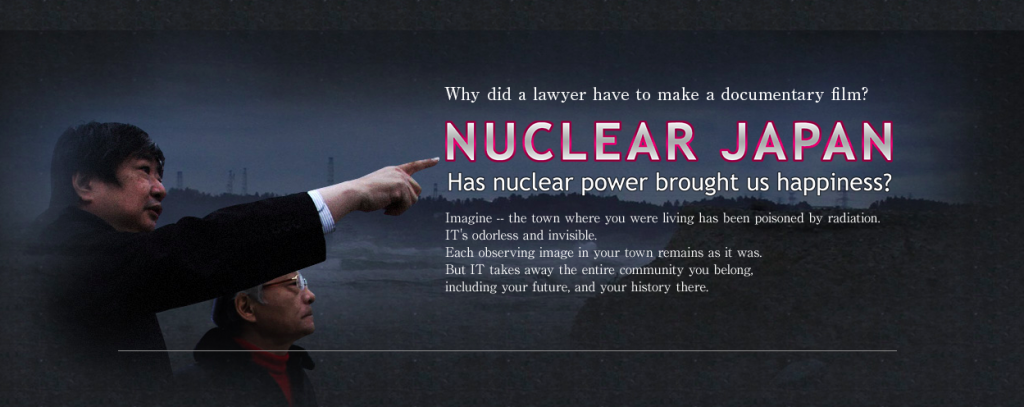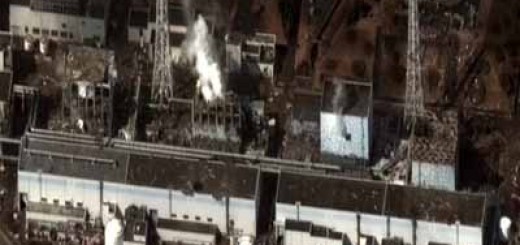Film Review: NUCLEAR JAPAN -4 years after/ Directed by Hiroyuki Kawai (NIT No. 172)
Hiroyuki Kawai is one of Japan’s top lawyers fighting legal actions against nuclear power. Apart from being a member of CNIC’s board of directors, he is the Co-Director of the National Network of Counsels in Cases against Nuclear Power Plants, and has taken on lawsuits against NPPs since the mid 1990s. He is also a film director, having produced the first version of Nuclear Japan in 2014, he released an updated version in 2015. An English version of Nuclear Japan: 4 years after is available and Kawai encourages people around the world to hold screenings in their country (details are available at the official website www.nihontogenpatsu.com/english).
The film is two hours, fifteen minutes long and very dense. It is full of detailed information not only about lawsuits, but also technical information on how nuclear reactors function–and malfunction, safety regulations, the economics and politics of the nuclear industry in Japan, the problems with nuclear waste and the possibilities of renewable energy. He interviews a wide range of experts, including Hiroaki Koide, lecturer at Kyoto University, Tetsunari Iida, Director of the Institute for Sustainable Energy Policies and Shigeaki Koga, a former public servant who worked in the Ministry of Energy, Trade and Industry (METI).
Along with all the technical information the film also movingly portrays the impact of nuclear energy on human lives. Kawai’s interview with a volunteer fireman, who was engaged in rescue operations immediately after the earthquake and tsunami in Namie Town close to Fukushima Daiichi, shows how, unable to enter the area due to the 10 kilometer evactuation order issued by the government on the morning of March 12, he was “basically forced to stand by while those people (trapped in the rubble) died.” In April 2011 when people were finally allowed in, they recovered 180 bodies in advanced stage of decomposition. The Mayor of Namie at the time, Tamotsu Baba, also weeps as he is interviewed by Kawai, telling how
in fact the radiation levels along the shore were relatively low, so rescue workers could have gone in and saved those lives if it weren’t for the evacuation order. Despite the strong emotions, which the viewer also feels when watching these interviews, one realizes that this is how a lawyer collects evidence, how he proves it is a lie that the Fukushima Daiichi accident didn’t kill anyone.
Indeed the film has been presented in court as evidence and while so much information on so many complicated issues in such a long movie, can sometimes be a little overwhelming, if seen in this light, Kawai’s message and intention becomes easier to understand. The film contains powerful evidence, for example, in the form of the tele-conferencing which took place between the TEPCO head office and manager, Masao Yoshida. The actual voices of the officials can be heard as they discuss evacuating workers from the stricken plant as radiation levels were rising to life-threatening levels. One can see very clearly, from this presentation of evidence, how close Japan actually came to complete ruin, and how the TEPCO officials reacted to this dire situation.
Kawai’s message, however, is essentially positive. He believes that the Fukushima disaster has increasingly forced the courts and the judges to expose the lies of the government and the nuclear industry, as well as take responbibility for the huge damages caused. The film shows Kawai flashing V for Victory signs outside the Fukui District Court, which had just handed down a judgment suspending operations of the Ohi NPP.
Victories in more recent court cases would also suggest that Kawai’s optimism is not unfounded, although it remains to be seen just how far the judiciary has changed and how much power it will be allowed to exercise. This film is an impressive presentation of evidence supporting the case against nuclear power and tells a compelling story of the Fukushima nuclear disaster from the point of view of a lawyer. The English version will hopefully allow a wider audience to access Kawai’s work and message.
(Reviewed by Caitlin Stronell, CNIC)



